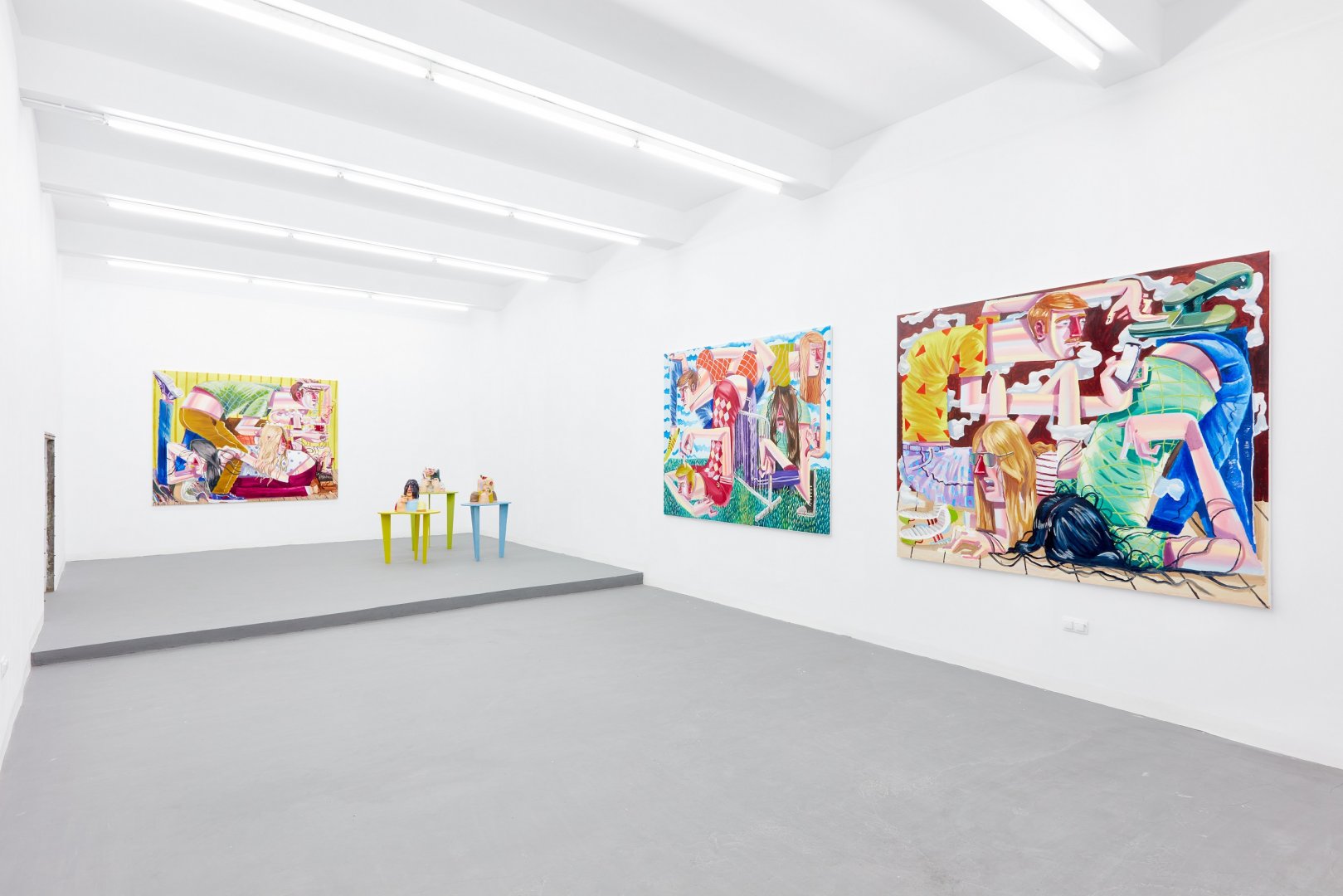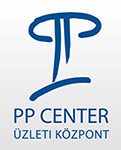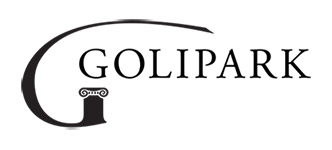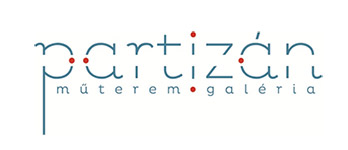Ákos Ezer: Try not to laugh challenge #020
Artkartell projectspace
October 16–30, 2020
Curated by: Rieder Gábor
Artkartell projectspace is glad to present the solo exhibition of Ákos Ezer, an emerging young Hungarian painter. The exhibition Try not to laugh challenge #020 is installing the artist's latest paintings and ceramic sculptures, introducing us to his grotesque, upside down universe whose habitants are facing new and unexpected challenges.
The young painter was born in the Hungarian city of Pécs in 1989 and has been developing his unique and distinctive painting style for more than half a decade. In his huge paintings expressive brushstrokes and bright contrasts are organized in colorful patterns. Horror vacui – there is no empty space in these massive works and the grotesque figures are stumbling all over as some sort of a modern Laocoön group. Gangling steeplechase runners stumbling through the obstacles on the lawn, some clumsy guys landing on a muddy patch of snow, smoke puffing mobile phone gazers, others are chilling all curled up and piled up teenagers are drinking their soap bubble cocktails. The exhibition presents his latest works. In its title – Try not to laugh #020 – it refers to YouTube compilations which were so popular among users during the lockdown in 2020.
The entangled boys might make you laugh, however this is just one of the interpretations of the pictures. These scenes of childhood campings and college rooms are not narrative paintings. Ákos Ezer would not compare them to short stories or movies but rather to music or dance choreographies. He goes far to make the obvious topics more abstract, using repetitive patterns such as woodgrain, striped, checkered or diamond patterned T-shirts. The pink tones of the limbs are modulated ranging from blue to yellow may resemble Fernand Léger’s “tubism” as they are meandering from frame to frame, filling all the space between them. The figures are abstract alter egos reflecting on the creator's position in the world, whose features (e.g. the big red nose) are so characteristic that they cannot be easily confused with anyone. One hides behind his sunglasses, the other combs his long 'rocker's hair' into his eyes, while the third takes on the features of an 'average guy'.
Despite the expressive humour of the clumsy figures, we should listen to the silent whispers of the subconscious instead of the explosive laughter. This also applies to the ceramic busts, which display some simple gestures of the figures. The glazed ceramic busts are installed on colorful wooden tables. They are happily trying to grab our attention: one of them is enthusiastically trying to open his beer with his long, heavy metal style hair covering his eyes while another one, an Elvis Presly imitator, is spraying out smoke as if a mentos drop was put in a bottle of Coke. The third one, a blond guy in 80s’ style is carefully balancing a green berry on his pursed lips. Behind the protective layer of the Benny Hill movie style canned laughter the paintings and busts of the exhibition Try not to laugh challenge #020 are hiding sensitive and deeply humane souls.
###
Ákos Ezer (1989) belongs to the new generation of Hungarian artists who grabbed the opportunities given by the WorldWideWeb and managed to build a successful international career from home. He graduated from the Hungarian University of Fine Arts in 2014 and his unmistakable grotesque and energetic pictures of explosive colors have been presented in several exhibitions. He had a solo exhibitions in Graz in the Künstlerhaus K/M (2019), in the Muzeul de Arte in Cluj (2019), in the Galerie Droste of Wupertall and Paris (2020) in the Tanja Pol Galerie in Münich, in the Hungarian Art+Text Budapest (2018, 2017). He participated at the young talents group exhibition of the Beers Gallery in London (2017), at the Viennacontemporary fair (2018) and at Art Berlin Contemporary (2018). He is frequently written about in both local and international journals and he was awarded several prestigious awards (Esterházy Art Award, 2017; K&H Art Award, 2016)
Supported by: PP Center





















